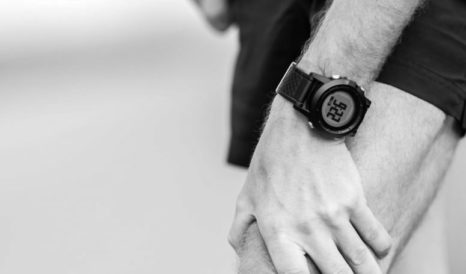ACL Reconstruction Surgery | Healing Timeline and How to Improve Your Recovery
Here, Simon Moyes discusses ACL Reconstruction Surgery, explaining the healing timeline and how you can improve your recovery.
Tearing an ACL is a very common injury. The tough, fibrous anterior cruciate ligament links your thigh bone (femur) to your shin bone (tibia). It can be torn when you twist your knee, change direction suddenly while running, or through a side impact. It’s particularly common in sports like football, rugby and skiing.
The main concern of anyone who is about to have ACL reconstruction surgery is: how long will it take to recover?
There are many factors which will affect the way that you heal from any operation. The average ACL recovery time is about six to eight months. The good news, though, is that your recovery can be improved with the right surgery and rehabilitation.
Why would I need an ACL reconstruction?
Tearing an ACL is a very common knee injury. The tough, fibrous anterior cruciate ligament that links your thigh bone (femur) to your shin bone (tibia) can be torn when you twist your knee, change direction suddenly while running, or through a side impact. It’s particularly common in sports like football, rugby and skiing.
While some people can manage without repair to this anterior cruciate ligament – relying on the other ligaments, tendons and muscles in the joint for stabilisation – most active people will need to have it repaired to carry on as normal.
An ACL can also be sprained – where the ligament is stretched without becoming detached. It is fairly rare to need surgery for this.
How do I prepare for ACL reconstruction?
Many ACL reconstructions are not done immediately after the injury. You will need a period of rest to allow the pain and swelling to go down, before trying to build up the strength in your knee. An intensive programme of physiotherapy exercises can be effective enough at stabilising your knee so that you don’t need surgery.
However, if you have continuing instability and knee pain, or you want to return to a more active lifestyle (through your job or for your sport), knee surgery is the best option.
I usually suggest that patients prepare for ACL surgery in a number of ways –ideally under the supervision of a physiotherapist.
Strengthening: when you have an injury to a joint, the muscles around it waste away – or atrophy – very quickly. It’s a good idea to start building the muscles around your knee joint so they will be more prepared to stabilise you after the operation.
Flexibility: making your knee joint more mobile can help with the operation itself and your rehabilitation afterwards. Your muscles naturally contract after an injury, so doing the right kind of stretching exercises can counteract that tightness – improving your mobility before and after the operation.
Psychological: you will be more ready to take on physical therapy challenges if you are confident in the strength of your leg.
What happens during an ACL reconstruction?
ACL reconstruction and repair are almost always carried out with minimally invasive keyhole surgery – using a tiny camera and small instruments.
A complete tear means that the ligament has been detached from the bone. In this case, part of a tendon from elsewhere in your body (often the hamstring at the back of your thigh or the patella tendon under your kneecap) is used to replace the ligament.
Small holes are drilled into the bone where the ACL was attached, and the graft tendon is threaded through and secured with surgical screws and buttons.
Occasionally, the ACL has simply pulled off the bone, in which case, it can be simply re-attached with arthroscopic surgery.
If the ACL is badly stretched, it can be reconstructed in the same way.
How can I improve my recovery from ACL reconstruction surgery?
Arthroscopic or keyhole surgery means that you can usually leave the hospital on the same day, and begin to weight bear immediately.
However, the fact that a tendon or your ligament has been grafted into the bone means that you have to wait for that connection to bond properly. Ligaments can be slow to heal – while bone fractures can heal in a matter of weeks, it takes much longer for a ligament to grow into the bone.
You may need to wear a brace for up to six weeks to prevent any accidental twisting movements.
Starting physiotherapy as soon as you can after the operation is the key to speeding up your recovery. It is particularly important to start straightening and bending your leg as soon as the swelling goes down. Building up your quadriceps muscle is also important for a quick recovery. And the sooner you can weight bear and walk around, the less muscle wasting you will experience.
If you’re focused on a speedy recovery, being 100% dedicated to your rehab is the best advice I can give.
Simon Moyes is an internationally renowned orthopaedic surgeon and leader in the field of arthroscopic (keyhole) surgery. His Capital Orthopaedics team works from The Cromwell Hospital in London, with its state-of-the-art diagnostic and surgical equipment, and top sports medicine professionals.

